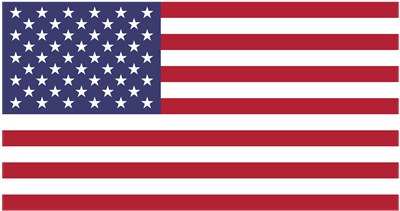Oldham Shaft Couplings Complete Assemblies starting at $23.75 with quantity discounts available
Basic Oldham Shaft Couplings Design
Inherent in the Oldham design is a unique characteristic-uniform velocity, regardless of shaft misalignment. In their original form, Oldham type couplings had backlash, needed lubrication, and accepted little angular misalignment. Renbrandt is the originator of improvements which greatly enhance their performance.
The Nylon centerpiece virtually eliminates backlash, noise, and the need for lubrication. The cylindrical cross pins permit greater angular misalignment (up to 5º).
Features
- Uniform Velocity
- Greater Misalignment (5º)
- No Radial Load
- Easy Separation
- Zero Backlash
- Light Weight/Low Inertia
- Moderate Torque
- 6000 Volt Insulation
- Small Size
- Torsional Rigidity
- Low Cost
Materials and Finishes
- Hubs – – Brass, nickel plated.
- Centerpieces Nylon (Others such as Polycarbonate on request)
- Set Screws – Stainless Steel, cup point, hex socket (STD) or slotted available. Orientation of set-screws with respect to crosspins maintaned.
Set Screw Sizes:
- Up to .125 Bore -Two 4-40 @120°.
- to .3125 Bore -Two 6-32 @ 90°.
- to .375 Bore -Two 4-40@ 90°
Size 1 $23.75 each Quantity Discounts Available
| Current Product No. | Bore Diameters +0.002 -0.000 |
|---|---|
| M201-33 | 0.125 X 0.125 |
| M201-00 | 0.938 X 0.938 |
| M201-03 | 0.938 X 0.125 |
| M201-22 | 0.120 X 0.125 |
| M201-23 | 0.120 X 0.125 |
| M201-02 | 0.120 X 0.938 |
Size 2 $25.25 each. Quantity Discounts Available
| Current Product No. | Bore Diameters +0.002 -0.000 |
|---|---|
| T301-22 | 0.120 X 0.120 |
| T301-23 | 0.120 X 0.125 |
| T301-24 | 0.120 X 0.1875 |
| T301-25 | 0.120 X 0.250 |
| T301-26 | 0.120 X 0.3125 |
| T301-27 | 0.120 X 0.375 |
| T301-33 | 0.125 X 0.125 |
| T301-34 | 0.125 X 0.1875 |
| T301-35 | 0.125 X 0.250 |
| T301-36 | 0.125 X 0.3125 |
| T301-37 | 0.125 X 0.375 |
| T301-44 | 0.1875 X 0.1875 |
| T301-45 | 0.1875 X 0.250 |
| T301-46 | 0.1875 X 0.3125 |
| T301-47 | 0.1875 X 0.375 |
| T301-55 | 0.250 X 0.250 |
| T301-56 | 0.250 X 0.3125 |
| T301-57 | 0.250 X 0.375 |
| T301-66 | 0.3125 X 0.3125 |
| T301-67 | 0.3125 X 0.375 |
| T301-77 | 0.375 X 0.375 |
Size 3 $27.00 each. Quantity Discounts Available
| Current Product No. | Bore Diameters +0.002 -0.000 |
|---|---|
| M501-66 | 0.3125 X 0.3125 |
| M501-67 | 0.3125 X 0.375 |
| M501-77 | 0.375 X 0.375 |
| M501-78 | 0.375 X 0.4375 |
| M501-88 | 0.4375 X 0.4375 |
Set Screw Style
| Size | Dia. | Max. Bore | Length | Weight (oz) | Misalignment Angle | Misalignment Offset | Max Torque | Max RPM | Max Temp. |
|---|---|---|---|---|---|---|---|---|---|
| 1 | 1/4″ | .125″ | 7/16″ | 0.055 | 3 | 1/32″ | 20″ oz. | 2500 | 175° F |
| 2 | 1/2″ | .375″ | 21/32″ | 0.25 | 5 | 1/16″ | 80″ oz. | 2500 | 175° F |
| 3 | 5/8″ | .4375″ | 31/32″ | 0.70 | 5 | 1/16″ | 100″ oz. | 2500 | 175° F |
What Are Oldham Shaft Couplings
Why Specify Oldham Shaft Couplings?
Specifying Oldham couplings in mechanical designs is beneficial for several reasons, particularly in applications where certain operational conditions and requirements must be met. Here are key reasons to choose Oldham couplings:
- Accommodation of Misalignment: One of the primary reasons for specifying Oldham couplings is their ability to accommodate significant parallel and angular misalignments between two shafts without imposing high stresses on the shafts or bearings. This feature is especially useful in applications where precision alignment is difficult to achieve or maintain.
- Low Backlash: Oldham couplings are designed to minimize backlash, making them suitable for applications requiring high precision and repeatability, such as in automated machinery, precision instruments, and control systems.
- Ease of Assembly and Maintenance: The simple three-piece design of Oldham couplings allows for easy assembly and disassembly. This facilitates maintenance and replacement without the need for realigning the connected machinery or disassembling other components.
- Versatility: With the center disc typically made from a polymer, Oldham couplings can be customized for different torque capacities, damping characteristics, and environmental resistances. The choice of center disc material can be tailored to suit specific application requirements, including temperature tolerance, chemical resistance, and electrical insulation.
- No Lubrication Required: The material properties of the center disc usually eliminate the need for lubrication, reducing maintenance requirements and the potential for contamination in clean environments, such as food processing or semiconductor manufacturing.
- Torsional Rigidity with Flexibility for Misalignment: While Oldham couplings are torsionally rigid, transmitting torque efficiently without significant power loss, they still provide the necessary flexibility to accommodate misalignment, combining the best of both worlds for many applications.
- Cost-Effectiveness: Compared to other types of couplings that offer similar levels of misalignment compensation and torsional rigidity, Oldham couplings are often more cost-effective, providing a good balance between performance and price.
- Vibration Reduction: The center disc can also serve to dampen vibrations and absorb shock loads, protecting sensitive components in the drive system from damage and reducing noise levels in operation.
When specifying an Oldham coupling, it’s essential to consider the specific application requirements, including torque capacity, shaft sizes, misalignment tolerances, environmental conditions, and operational speeds. Proper selection ensures that the coupling will perform effectively, with a long service life and minimal maintenance.

 MADE IN THE USA
MADE IN THE USA

